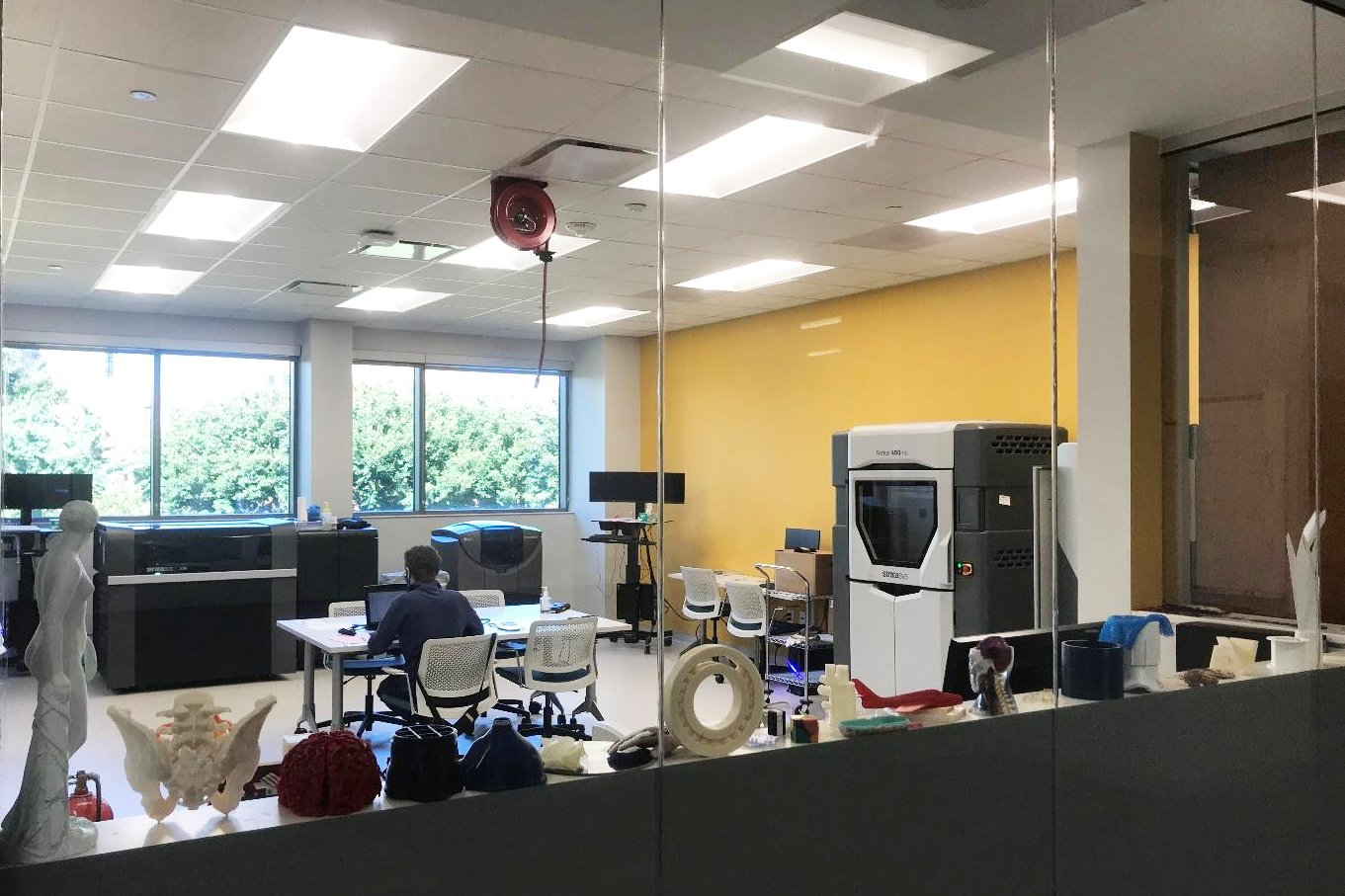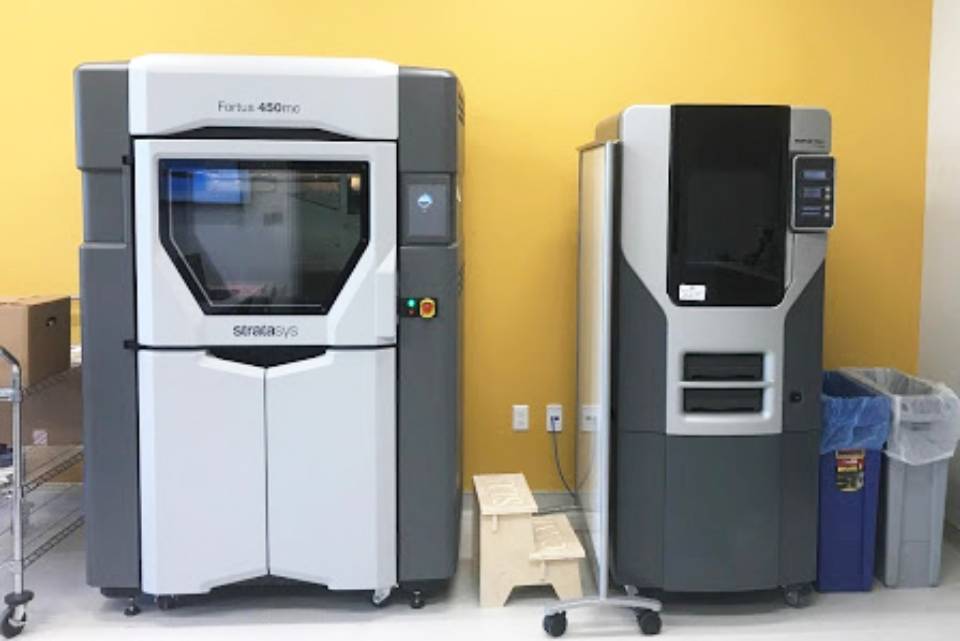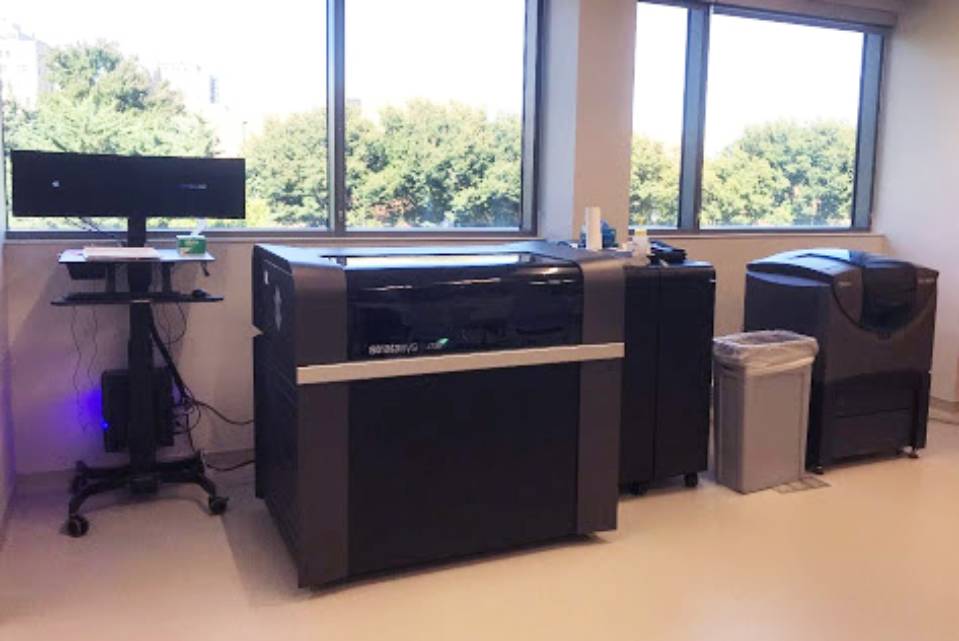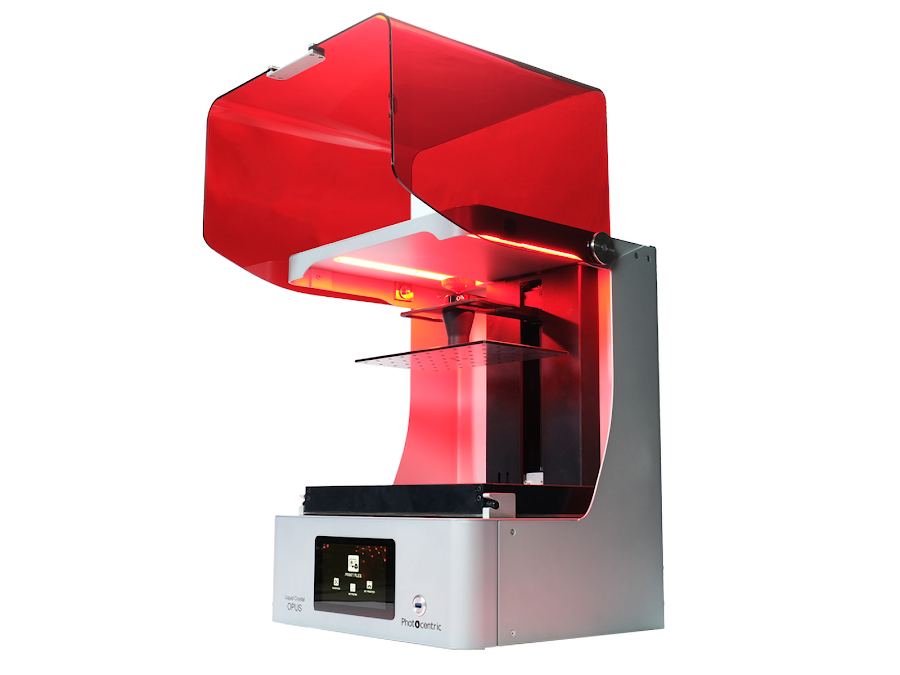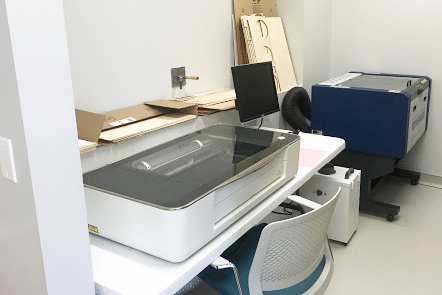SLU-CAM Technology
Saint Louis University's Center for Additive Manufacturing, or SLU-CAM, is a 1,000-square-foot facility housed in the Interdisciplinary Science and Engineering Building (Room 204). The center's mission is to connect students, researchers and the community with expertise and resources in additive manufacturing.
A full-time additive manufacturing engineer and several engineering students staff SLU-CAM to assist in developing ideas and maintaining the equipment in the facility. The facility is staffed 9 a.m.-3 p.m., Monday through Friday, and keeps an open-door policy. This allows students and researchers to come in and chat about their designs and needs at any time.
In addition to the AM expertise offered by the center, the center houses four commercial-grade 3D printers, two laser engravers, 3D scanning equipment and computing resources.
A summary of SLU-CAM technologies is listed below. Also, feel free to download our capabilities brochure.
For more information please stop by or email us at slu.cam@slu.edu.
FDM Printers
Two main FDM (Fused Deposition Modeling) printers are available at the center: Stratasys Fortus 250mc and Fortus 450mc. Corresponding print volumes are 10 x 10 x 12 inches and 16 x 14 x 16 inches.
The Fortus 250mc has a specified accuracy of ±0.0095 inch (0.241mm) and the Fortus 450mc has an accuracy ±0.005 inch (0.127mm) or ±0.0015 in/in (0.0015mm/mm), whichever is greater (100 mm wide parts will be at ±0.15mm accuracy in that dimension), with additional z directional accuracy equivalent to the slice height.
FDM printing is the technique most people are familiar with for 3D printing. In short, a spool of thermoplastic filament is extruded through a heated nozzle, allowing the thermoplastic to melt. A gantry attached to the heated nozzle then moves in the XY plane to lay the material down in a specified pattern. By doing many of these layers a 3D model can be produced.
The Fortus 250mc uses ABSplus in a variety of colors as the build material and SR30 as a support material (unless model material is used). The Fortus 450mc has many options of model materials with corresponding support. Standard prototyping thermoplastics include ABS-M30 (different colors), ABS-M30i, ABS-ESD7 and ASA (different colors). Engineering grade thermoplastics for the Fortus 450mc include Polycarbonate (PC), Biocompatible Polycarbonate, Nylon12, Carbon Fiber infused Nylon12, PC-ABS mix, ST-130. Additionally, the Fortus 450mc can print high-performance thermoplastics including Ultem 9085, Ultem 1010, Ultem 1010 CG, Antero 800NA, Antero 840CN03.
Applications include prototyping design to complex final-use products. These systems are commonly used for the senior design classes in engineering and research applications throughout SLU.
These printers provide rapid/low-cost prototyping of parts that could not be manufactured by other means. Several of the materials used for manufacturing utilize a soluble support resin, making clean-up of even the most complex parts as simple as soaking in a basic solution. However, due to the manufacturing technique, the part strength is anisotropic, and parts are left with a layered appearance. These limitations can be overcome through post-processing techniques and print orientation optimization.
PolyJet Printers
PolyJet printers work similarly to inkjet printers that people use in their everyday lives. However, instead of drops of ink, the printer jets drops of photopolymers that solidify when exposed to UV light. The printer builds from the bottom up with each layer accumulating on the build tray until the desired height is reached.
PolyJet printers are unique because they mix multiple materials and colors into one model to give the full color spectrum and multiple durometers in a single print. SLU-CAM has two types of PolyJet printers, the Objet Eden 260V and Stratasys J735. The Eden has a build volume of 255 x 252 x 200 mm (10 x 9.9 x 7.9 in) and a resolution between 16 and 23 microns (0.001 to 0.0006 in) depending on print speeds. The J735 has a build volume of 350 x 250 x 200 mm (13.8 x 13.8 x 7.9 in) and a resolution between 14 to 27 microns (0.001 to 0.00055 in) depending on print mode.
PolyJet printers are used when accuracy, surface finish, and details are essential components of the design and part strength is less important. PolyJet printers can mix multiple materials and colors into one model, allowing for an endless combination of color gradients, transparency, and flexibility. One way of doing this is through the application of voxel printing.
Voxel printing is the fusion of art and printing. A voxel is a 3D version of a pixel. In this style of printing, MATLAB is used to assign color or material data for every voxel of a 3D print. This allows for complete control over every aspect of your design, down to each voxel's stiffness, texture and color. This application can print models of the body that look and feel real.
Another benefit of these printers is the fast build times and ability to print complex shapes with intricate details and delicate features. For example, here at Saint Louis University, the printers make microfluid devices with controlled channel sizes. Other students are printing electrophoresis devices and models of cleft-palate defects.
The main limitation of PolyJet printing is that it requires manual support removal. Depending on the type of support material the model is printed with, it can be removed with a water jet or by soaking in a soluble solution. If you can think it and design it, PolyJet printers can print it.
LCD Resin Printer
The OPUS LC is a third-generation liquid resin printer (after SLA and DLP). Each layer is cured by the pattern appearing on the system’s high-resolution liquid crystal display. In terms of material, the system is open-source, allowing dozens of material choices. The build volume is 12 x 7 x 8”, with a layer height approaching 10 microns. This device produces parts of exquisite detail and is extremely cost-effective.
Laser Cutters/Engravers
SLU-CAM’s two high-performance laser cutters are perfect for most 2D cutting or engraving applications. The 75-watt Epilog Helix laser cutter is an industrial-grade CO2 machine best suited for cutting 2D parts out of a wide range of materials. The most used materials at SLU are 3mm/5mm plywood, aircraft-grade plywood, acrylic, balsa wood, cardboard and rubber. This machine can cut at an accuracy of ±0.01 in (0.254 mm). With these materials students and researchers have made parts for drones, ribs for a model airplane wing or electronic board anchor plates.
The center also houses a 45-watt Glowforge Pro laser cutter. This quick, easy-to-use wireless printer was designed for a wide range of applications with a large catalog of materials. This system utilizes a built-in camera that allows users to drag and drop their design to the proper location, make multiple copies, or scale it as desired using the rulers on the web app. This built-in camera allows users to easily engrave on almost any material and precisely place the image on delicate materials. The Glowforge is perfect for raster engraving text or images at a maximum resolution of 1355 DPI with an accuracy of ±0.001 in (0.0254 mm).
